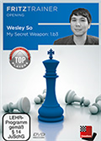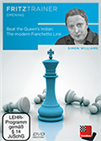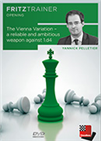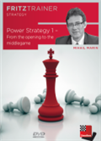Playing opens, American style
The US Open is always a special event, and it will always remain so. Why? Because it offers three different schedules to choose from — yes, in the United States you can play different schedules, which merge into one after certain rounds. The traditional one-game-a-day (9-day schedule) is on offer for those who wish to escape the brutal schedule of American events in the US — despite a vast development and improvement in conditions, double rounds are still part of the circuit of open events in the US.
From my personal experience of the past two years, I came to the conclusion that anyone strong enough who has a shot at winning this event should choose the traditional schedule. It is not only about energy preservation — it also has both a larger and more balanced group of participants. I think GM Tarjan agrees with me on that. I had the pleasure and honour of meeting, playing and acquainting with grandmaster Tarjan in the last round of 2018 US open. That game eventually ended in a draw.

Your author with GM James Tarjan | Photo: John Hartmann
The six-day schedule, which I actually entered, ended up being the most energy-consuming one. The time control of 100' for 40 moves plus 30' after that and 30-second increments from the start meant one could end up playing six to eight hours a day before merging into the traditional event in round seven.
Ranked second on the six-day schedule behind the in-shape and explosive GM Nyzhnyk (the young Ukrainian has posted several fantastic results lately and has entered the Top-100 list for the first time), I started struggling from round one, when I had to grind my way to beat a young opponent for more than four hours, despite out-rating him by over 800 points! This trend kept going later on, as I had to play for over five hours in round two to swindle another young opponent in a drawish endgame. This was extremely frustrating, specially because the person next to me — Illya Nyzhnyk, precisely — was winning his games right and left effortlessly. The time elapsed during his first three games combined was less than three hours!

"It is easy to win guys!", Nyzhnyk was probably thinking | Photo: John Hartmann
After round four in the traditional section, the two highest-rated grandmasters, Kamil Dragun and Victor Mikhalevski, had perfect scores. After a quick draw in round five, the two continued to share the lead on 4½ out of 5. Neither of them managed to win in round six — Dragun was close to winning against Tarjan, but the experienced GM sat tight and held his young opponent. Thus, Dragun and Mikhalevski were on 5 out of 6 before merging with the other two groups in round seven.
Back to the six-day schedule: Nyzhnyk ended up having to put some effort into his fourth win — which was nonetheless smooth — while your author needed another five hours to win his fourth game. The two of us were joined by the winner of the "2019 GM Arnold Denker Tournament of High School Champions", IM Bryce Tiglon.
Drained by my four games, I offered (kind of shamelessly) an early draw with White when I knew I had a slightly better risk-free position against Nyzhnyk, which was accepted almost immediately. I was too tired to feel bad about my unprincipled decision and headed to bed for a short nap right after the game! Tiglon held GM Mackenzie 'Mac' Molner to a draw and remained in a tie for first. In round six, Nyzhnyk won another easy game against IM Justin Sarkar — the game ended almost instantaneously after Nyzhnyk did the most important thing in the opening: he developed his pieces!
 Meanwhile, 1.b3 has also found its way into the practice of today's world elite, and now finally a modern top ten player has taken on the subject for ChessBase: none other than Grandmaster Wesley So!
Meanwhile, 1.b3 has also found its way into the practice of today's world elite, and now finally a modern top ten player has taken on the subject for ChessBase: none other than Grandmaster Wesley So!Still tired and also under the weather (from my previous trip), I played horribly against Tiglon, and only a miracle let me slip out with a draw. Thus, Nyznyk was the sole leader with 5½ points.
The fast-paced 4-day schedule (obviously with a shorter time control) was the hardest group of all. While the other groups had three grandmasters each, the 4-day schedule included ten GMs and a number of IMs. Unfortunately, games in this group did not make it to the database. All I know is that GMs Darius Swiercz and Lazaro Bruzon drew their games in round six and were on 5½ out of 6, much like Nyzhnyk. They were eventually joined by none other than Timur Gareyev, champion of the 2018 edition.
After the merger, while Bruzon and Nyzhnyk made an uneventful draw, Swiercz played a great game and completely outplayed Gareyev. After having obtained a winning position though, Dariusz missed a winning opportunity and ended up splitting the point with the defending champion.
 This DVD is packed full of new, exciting and novel ideas; based on a repertoire starting with the moves 1 d4 Nf6 2 c4 e6 3 Nf3 with g3! to follow.
This DVD is packed full of new, exciting and novel ideas; based on a repertoire starting with the moves 1 d4 Nf6 2 c4 e6 3 Nf3 with g3! to follow.
Dariusz Swiercz is definitely on his way to 2700, but the newly-wed and St. Louis University top board needs to have enough time on his clock to convert his winning positions!
Round seven was definitely the best round of the event for your author. After four games that lasted over five hours, it was sweet to win within a few hours, way before the time control was reached. The game received positive feedback from those who followed it, so I decided to include it in this article.
After the seventh round, ten players were tied for first place, and a group of as many players was trailing half a point behind — this event usually has around 500 players, with a record-breaking 836 participants in 1983. While four of the five top games were drawn in round eight, Nyzhnyk posted another smooth win, despite the fact that he had prepared for the wrong opponent!
So, Nyzhnyk got to the final round leading by half a point. Eleven players, including your author, were in the chasing pack. To conclude without any fuss, Nyzhnyk posted another convincing victory, with Black against Gareyev. This game barely took two hours to finish! A nice and instructive game! [Incidentally, Nyzhnyk recently created a Twitter account -Ed.]
 The Vienna Variation is a particular and independent system of the Queen's Gambit. It arises after 1.d4 d5 2.c4 e6 3.Nf3 Nf6 4.Nc3 dxc4, when Black's capture on move 4 is strongly reminiscent of the Queen's Gambit Accepted.
The Vienna Variation is a particular and independent system of the Queen's Gambit. It arises after 1.d4 d5 2.c4 e6 3.Nf3 Nf6 4.Nc3 dxc4, when Black's capture on move 4 is strongly reminiscent of the Queen's Gambit Accepted.Although the big prizes had already been decided, there was another incentive for the US players: the top American finisher would get a spot at the 2020 US Championship, an honour for most of the players. In fact, of all those contending for qualification, only Alexander Shabalov competed in the US Championship since it became this strong — currently, the average of the top players at the event is usually higher than 2700.
Andrew Tang was the closest to steal the spot but failed to convert a nice advantage and even lost against Bruzon. I saved a topsy-turvy game against 'Mac' Molner; Shabalov kept his ground against Swiercz; Tiglon finished a fantastic week with a fourth draw against a grandmaster; while Robert Hungaski over-pressed against Kamil Dragun and lost.
In the end, Bryce Tiglon and I had the highest tiebreak scores among the players from the US, which meant an Armageddon encounter would decide who gets the qualification spot. A bidding followed: the lowest amount of time bid, out of ten minutes, would get Black and draw odds. Tiglon got 10 minutes to my 7½, but I was the one with draw odds.
After a tense and nerve-wrecking battle, the game was decided by a blunder. You can see the footage below:
With another lucky win, your author earned the chance to play in the 2020 US Championship, the strongest tournament I have ever played!

Minutes after qualifying with USCF Executive director Carol Myers — I am still tired, a bit ill, and not shaved...but relieved nonetheless
On a personal note, I cannot thank enough my fiancée, best friend and business partner Sabina Foisor for her unconditional support and indivisible attention to me throughout the event. She even would occasionally answer my e-mails so that I would remain focused on the tournament. Thank you, Sabina!
Finally, I would like to tell you about a couple of curiosities. As you may have noticed, John Hartmann kindly helped me to assemble this report by loaning his photos. Think you can answer a couple of trivia questions?
 The first DVD deals with the initial phase of the game, when the all the reigning principles can be crystalized into just one: DEVELOPMENT!
The first DVD deals with the initial phase of the game, when the all the reigning principles can be crystalized into just one: DEVELOPMENT!
John was very happy for my success, yet he was the one who bought me a drink! Why?

Whenever I am in a chess photo, and I am the higher rated player, I am usually the more famous person in the picture — this is a rare occasion where my extra 800 points don’t count! Who is the person next to me?!
Answer #1: John also had the tournament of his life and won the U1800 prize, collecting a $1,500 check for his effort, while my massive tie for fourth place only earned me $391.11! So, John treated! Also, John won a hefty 101 USCF rating points to achieve his peak! Way to go John!
[As Hartmann himself pointed out in the comments section, despite this being his best performance to date, he is still 35 points off his USCF peak. -Ed.]Answer #2: Five-time WSOP champion
Allen Cunningham!
Links





























